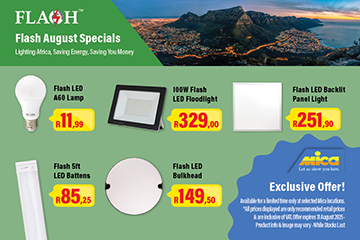Before we begin, we need to understand what the concept of cascading is, so that we understand how this can be used to achieve a good degree of cost saving. Definition: Cascading is achieved when using a lower rated kA breaker model down stream from a fully rated upstream breaker in a tested combo tripping arrangement.
One would anticipate that low level shorts, overloads say, would result in the downstream unit tripping, whilst at high levels the upstream as well as the downstream may both trip.

This should not be a great inconvenience in reality as high-end short circuits are indeed quite rare.
Many of today’s modern circuit breakers are so fast at tripping that they cut off the fault current before reaching the maximum available. This is termed current limiting. This can be of direct benefit in that the construction of the current limiting circuit breaker can be a lighter duty build and achieve some direct cost saving if compared to zero switching types. Of course, this high-speed efficiency must be guaranteed or there will be serious tripping problems. This would then place a cost on these products and that the manufacturer must be a trusted supplier.
Manufacturers have identified that this as an advantage that can be used to secure their products and offer some cast saving to the user, a win/win situation. Any single line diagram can be shown to have a number of circuit breakers in series from the supply transformer down to the end load use. Also, any circuit breaker being installed is required to be matched to the available short circuit at its installed point. It can be higher but never be below this kA.
Tests by manufacturers have found that in using their modern high speed current limiting circuit breakers it is possible to install a lower current rated breaker down stream from a fully kA rated higher breaker upstream. That is to say the down stream circuit breaker is installed at a higher kA level than it can claim compliance for. This can only be at the exact combination as tested and as such they tend to publish charts of the successful tested combinations.
This concept is termed cascading, and is where the cost saving in installing lower kA product is possible. (Generally, the higher the kA the more costly the breaker)
It is also not just a whim of the manufacturer/s but has been accepted into most of the world’s wiring codes. However, using cascading does come with certain rules and requirements that need to be adhered to, to achieve success going forward.
Guidelines
- You need to follow the manufacturer’s guide or table; these are the only options backed by testing to support this option.
- If your selection is not available the manufacturer would probably not support this option due to test costs.
- Keep the selection levels a basic as possible, multi levels of cascading add risks due to complexity.
- Any replacement breakers must be of the same type, model and manufacture, no mixing allowed.
- Older panels may have equipment that has been made obsoleted so contact the supplier as to what would be recommended.
- Indicate the panel is making use of the cascade concept to warn others, SANS requirement too.
- Repeated tripping under high end faults will require early breaker renewal.
- Cable/distance still utilised where natural short circuit limiting is available.
Example
A manufacturer indicates they have done extensive cascade tests using a mid-range amp MCCB with their popular 5 kA industrial range of MCBs. This typically is where large savings could be achieved as the smaller MCBs are highly popular and very easily sourced as units.
The main incoming mid-range unit indicated as part of the cascade range is chosen to comply fully with amp/kA and the like. The use of any indicated downstream tested device from the 5 kA range paying special attention to whether single pole and 3 pole units can be used. (There are occasions that only 1P may be an option as it is noted from test experience that 1P units may pass tests easier then 3P due to the lower applied voltages).
It can normally be seen that the 5 kA requirements are for quite a large number of these units as there are many circuits that are in service. The use of these 5 kA units is where the real savings are factored in especially in large numbers. Future maintenance is easier as a contractor can easily source if they don’t already carry these popular models with.
Another popular method, if the main breaker is of a higher amp rating, could be the introduction of the cascade units as section breakers.
Typical cascade table:
|
MCCB Feeder |
Downstream MCB 20 kA |
Downstream MCB 15 kA |
Downstream MCB 10 kA |
|
Model: U 3/4P |
Model: S |
Model: S |
Model: S |
|
Rated: 20 kA |
Rated: 5 kA |
Rated: 5 kA |
Rated: 5 kA |
|
Amps: 100-160 A |
Amps: 1-120 A |
Amps: 1-120 A |
Amps: 1-120 A |
|
|
Cascade: 1P only |
C ascade: 1P +3/4P |
Cascade: full range |
By Kevin Flack
Flack has recently retired from industry and believes he still has valuable in-depth knowledge of the South African electrical landscape due to wide experiences gained in his 45+ years working career. He is keen to explore the training arena so that this can be passed on to the current youth so as to benefit their practical ability in the electrical field. In these trying COVID-19 times, Flack can provide online training to keep your staff up to date on all aspects of circuit breaker deployment. Email kevin.flack@outlook.com





